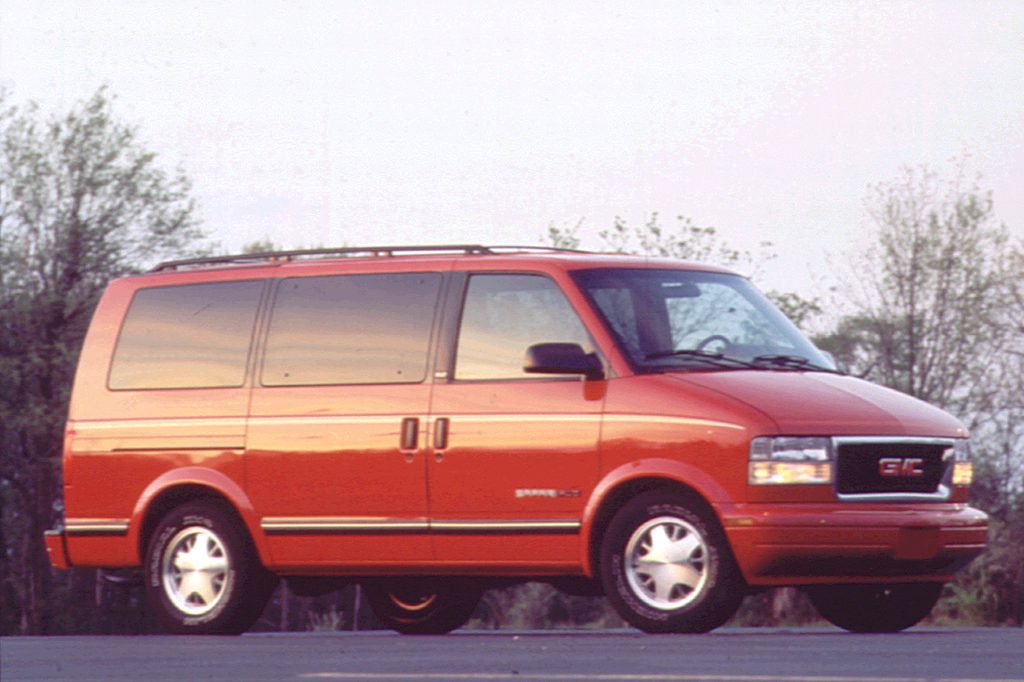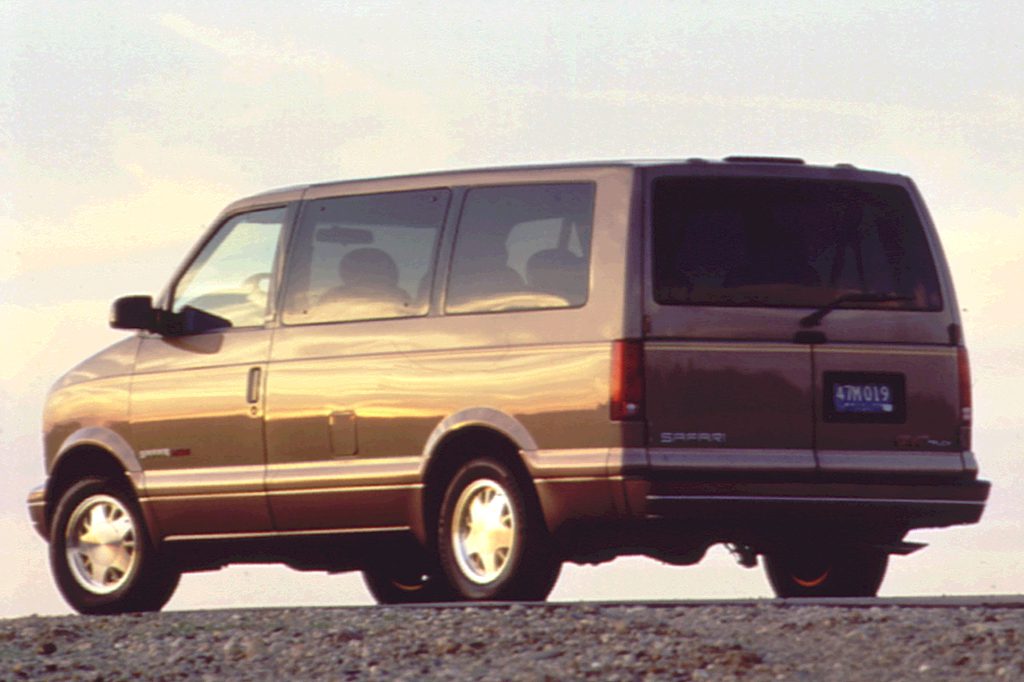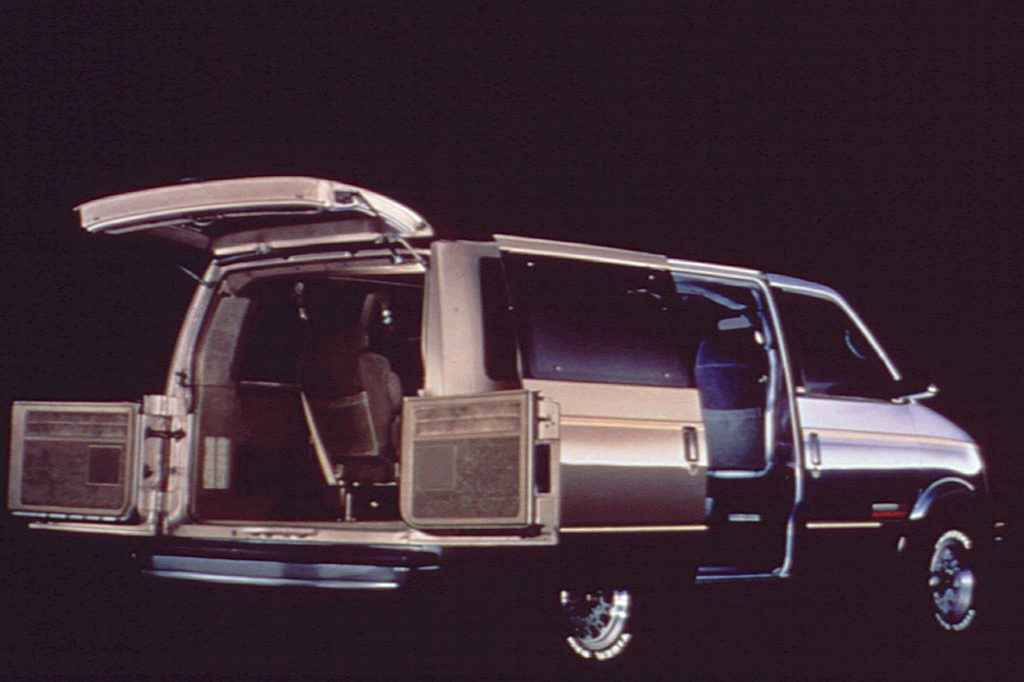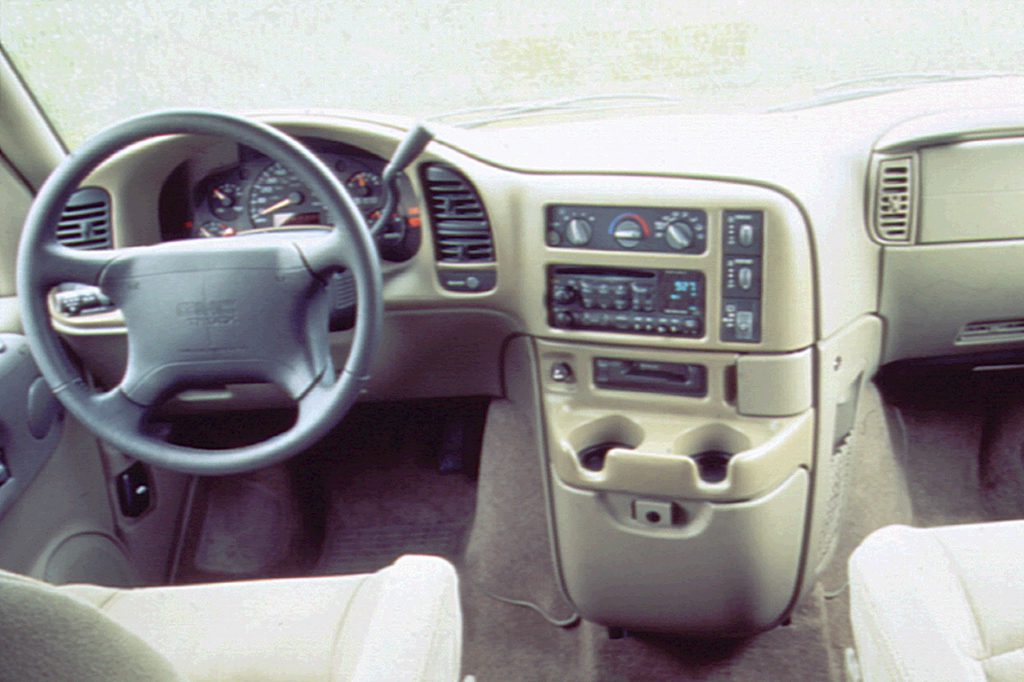| Minivan; Built in USA |
|
|
| Good condition price range: $1,000 – $7,000* |

1996 GMC Safari

1997 GMC Safari

1992 GMC Safari

1992 GMC Safari w/Dutch-door option

1997 GMC Safari interior
| Pros: |
|
| Cons: |
|
Safari is fine if you need a beast of burden, but don’t want a full-size van. As a daily people-mover, however, a front-drive minivan would be wiser.
Overview
GMC Safari and Chevrolet Astro models were identical except for names and series designations. They are truck based, rear- or all-wheel-drive minivans that have higher payload and towing ratings than front-drive counterparts.The all-wheel-drive option, 4-wheel antilock brakes, and an extended bodystyle were added for 1990. Also new for ’90 was a restyled instrument panel that included a larger glovebox. Five-passenger seating was standard, but seating for up to eight occupants might be installed. Developing 150 horsepower, the standard 4.3-liter V6 engine hooked to a 4-speed automatic transmission.
Yearly Updates
| 1991 Safari A high-output V6, rated 175 horsepower, became available in 2WD passenger Safaris in ’91. |
| 1992 Safari During the 1992 model year, a more powerful V6 engine option–rated 200 horsepower–became available. So did a new rear-door option, dubbed Dutch doors, featuring a one-piece glass liftgate with separately opening split panel doors below. |
| 1993 Safari A revised 4-speed automatic transmission with electronic controls arrived in ’93. Base engines jumped from 150 to 165 horsepower. A driver-side airbag became optional in mid-year. |
| 1994 Safari A driver-side airbag was installed in all Safaris for ’94. Other new safety features included side guard beams in both front doors and the sliding side door, plus a center high-mounted stoplamp in the roof. |
| 1995 Safari Facelifted for 1995, all models got extended bodies and a 190-horsepower engine. Regular-length vans were dropped. |
| 1996 Safari A passenger airbag went into 1996 models, which featured a revised dashboard with a locking glovebox. A new interior engine cover increased front foot room, and had built-in cupholders. New ducts heated and cooled rear seats. |
| 1997 Safari Speed-sensitive power steering and daytime running lights led the list of changes for ’97. |
| 1998 Safari There were no significant changes for 1998, however, Ford dropped the rival Aerostar. |
| 1999 Safari Changes were limited to optional running boards and redesigned outside mirrors. |
| 2000 Safari Safaris gained rear child-seat anchors, a standard third-row bench seat for 7- or 8-passenger capacity, and a larger fuel tank (now made of plastic). Headlamps now switched on automatically in low-light conditions. Other new features included “flash-to-pass” headlamps, battery-rundown protection, and retained accessory power. A new Tow/Haul mode optimized shift points on the automatic transmission for heavy hauling and towing. The V6 engine was mildly updated for quieter operation and lower emissions. Maximum trailering capacities were increased: to 6000 pounds for 2WD models and 5800 with AWD. |
| 2001 Safari Safari lost its base passenger model, leaving SLE and SLT trim levels for 2001. A new seven-passenger option replaced the second-row bench with twin bucket seats. |
| 2002 Safari For 2002, passenger versions got standard deep-tint rear glass and cargo versions were available with remote keyless entry and a rear heater. |
| 2003 Safari Like the similar Astro, Safari gets all-disc brakes and 16-inch wheels on all models. |
| 2004 Safari The Safari is unchanged for 2004. |
| 2005 Safari Safari is unchanged for 2005. General Motors says this is its last year. |
